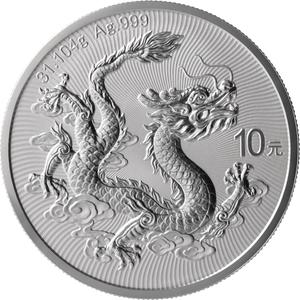The People's Republic of China issues bullion coins through various mints under the supervision of the People's Bank of China. The China Banknote Printing and Minting Corporation oversees the production and distribution of currency and coins in mainland China, while the China Gold Coin Incorporation, a subsidiary of the People's Bank of China, is responsible for designing and marketing China's precious metals coins.
China has been issuing bullion coins since 1982, when the iconic Panda range was introduced - first in gold, then starting in 1983 in silver as well. The coins are denominated in Renminbi (Yuan) and are legal tender in China. However, their intrinsic value is much higher than the face value; these coins are not intended for circulation but are targeted at bullion investors or collectors.
Initially the formats that were used were based on the troy ounce, which is internationally popular for bullion coinage. Starting in 2016, the weight system of troy ounces was replaced by the metric system of grams, the standard system of weights used in the People's Republic of China and indeed most of the world. However, the country still issues coins in troy ounces occasionally.
These coins are minted at various locations across China, including Shanghai, Shenyang, Shenzhen, and Beijing. Unlike other countries that have multiple mints, Chinese mints do not employ mint marks, which means that their products are visually indistinguishable. |




